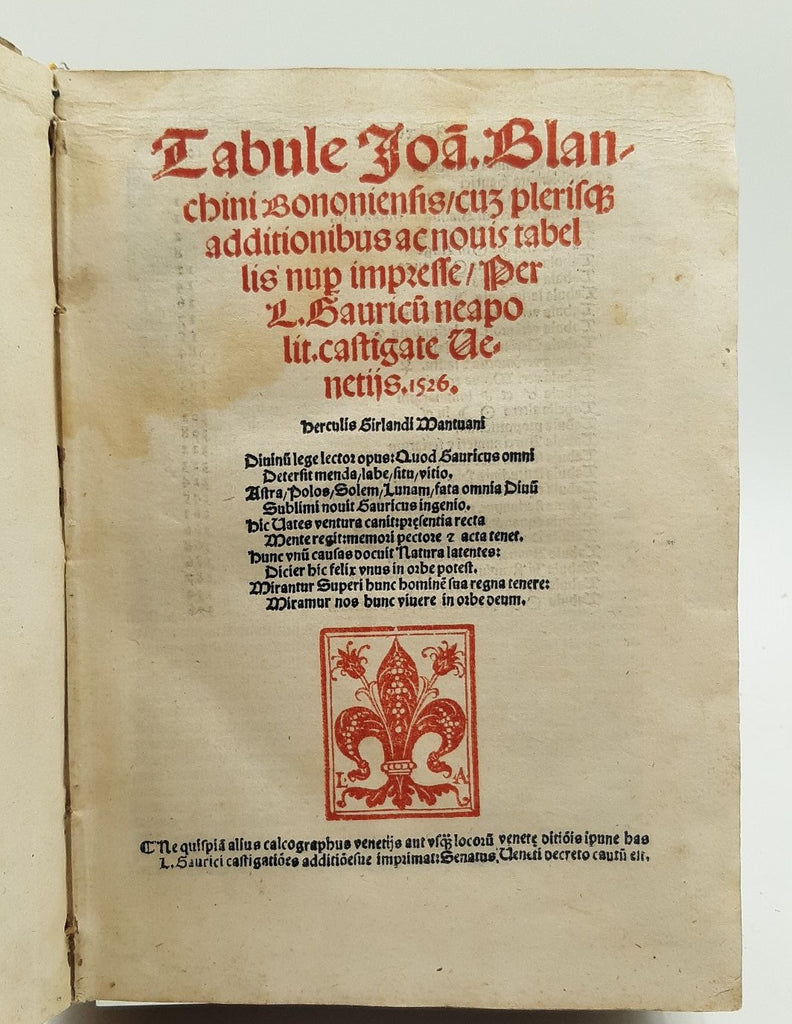Tabule Ioa. lanchini Bononiensis cum plerisqu additionibus ac novis tabellis nup impresse per L. Gauricū Neapolit, castigate Venetijs.
BIANCHINI, Giovanni







Venice: Lucantonio Giunta. 1526.
Second edition, edited by Luca Gaurico (first edition, 1495) 4to. [28], 398 leaves. Contemporary vellum, yapp edges, small wormholes on covers (one on upper and three on lower) and some waterstaining on lower cover, ties missing. Manuscript lettering to spine (partly covered by label reading "A-b") and on bottom edge of text block. Internally very good, some waterstaining to a few of the early leaves (1i (title page)-2ii and 2vii-3ii), marking to leaf r3. Previous ownership inscription on front free endpaper crossed out. Overall in excellent condition. Introductory text in gothic type. Title page printed in red and black as are some of the tables. The title page has the printer's device of Lucantonio Giunta: "Il Giglio Fiorentina", the Florentine Lily which is the symbol of Florence. Giunta was born in Florence in 1457 although he left for Venice in 1477 and began publishing books in 1489 producing over 400 books until his death in 1538.
Medieval astronomy was a science of mathematical and numerical tables designed to determine the position of the planets and stars and so help solve problems relating to the earth’s movements. Among the earliest examples in the west was Ptolemy’s second- century Mathematike Syntaxis (also known as the Almagest). This work formed the basis of Western astronomy and underpinned the Alfonsine Tables first produced in Spain in 1252. By the fifteenth century these texts had become corrupted and unreliable. In his Tabule, Bianchini (1410-1469), the professor of mathematics and astronomy at Ferrara and the astronomer to the d’Este court, sought to correct these and to revive the Ptolemain model. His work transformed Renaissance astronomy. This 1526 edition is a significantly expanded version of the 1495 edition. Both are based on Bianchini’s manuscripts which were known and consulted by later scientists including Regiomontanus and, especially Copernicus who copied Bianchini’s auxiliary tables for computing planetary latitudes. These tables appear for the first time in the second edition making this book the link between medieval and a recognisably modern astronomical science.
